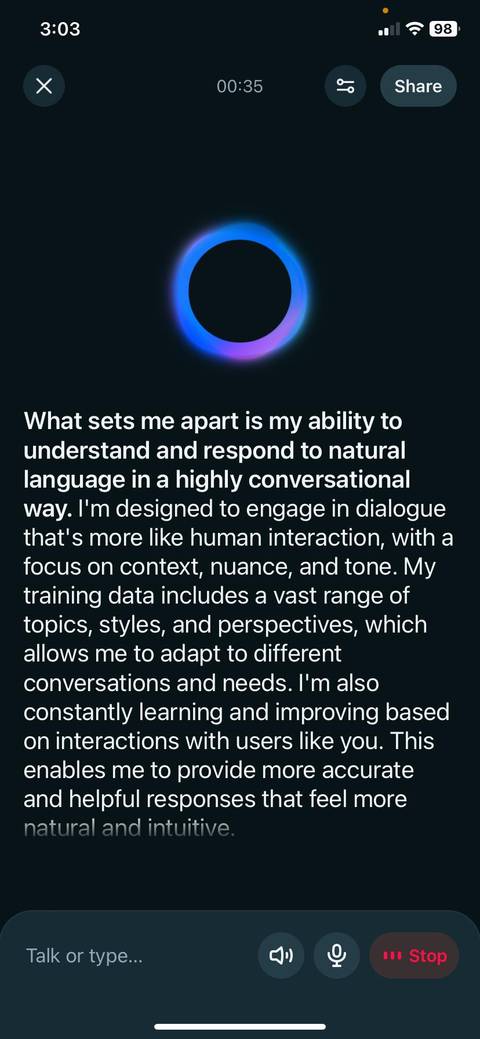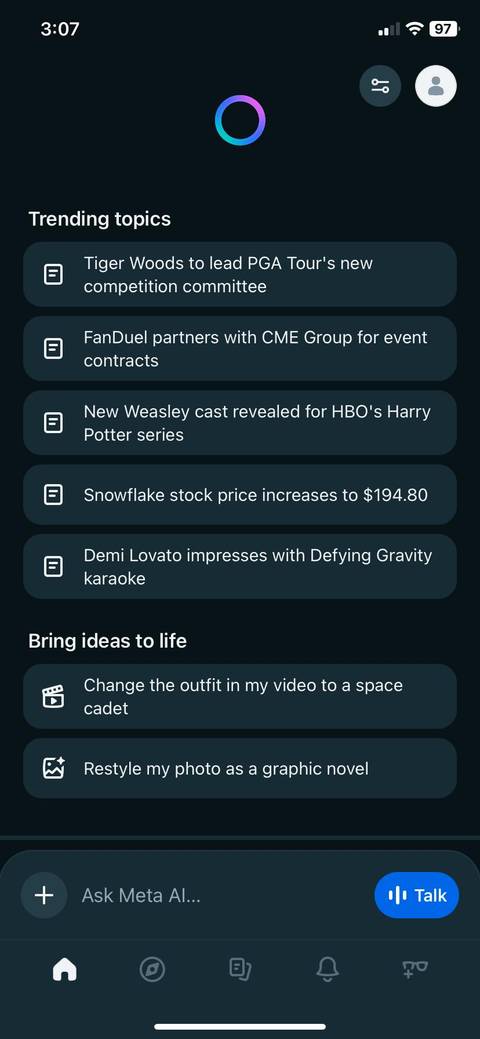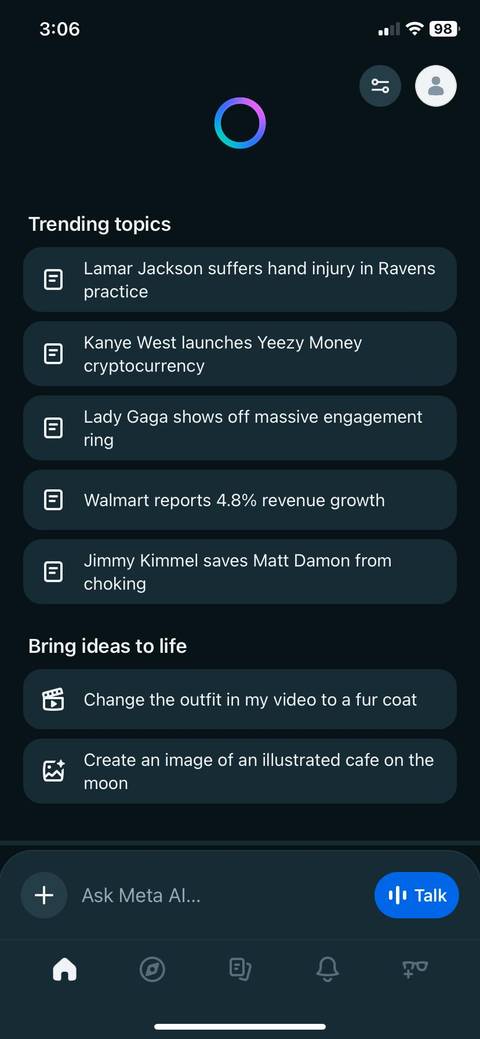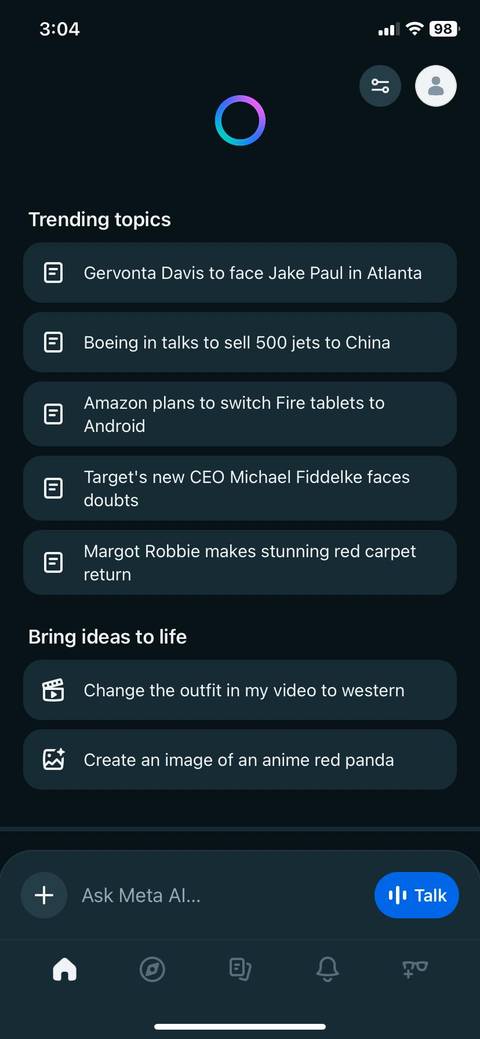Having spent time with ChatGPT, Grok, Gemini, and the rest of the familiar names, I assumed Meta AI would be more of the same. Although it doesn’t scream for attention with flashy marketing, it surprised me with features that solve real-world problems in unexpectedly useful ways.
5
The voice mode doesn’t feel robotic
Meta AI sets itself apart with a voice interaction experience that feels oddly human. It supports full-duplex conversation, meaning it listens and speaks in real time without needing to wait for you to finish speaking. There are no wake words, no repetitive confirmation cues, no robotic pacing, and it’s unphased by awkward silences that plague most LLMs. You can interrupt mid-sentence, change the topic, or rephrase a thought, and it adjusts without hesitation.


What’s even more compelling is how this conversational flow carries seamlessly across devices and input methods. Start speaking into your phone while you’re out walking, then pick up the conversation later via keyboard on your desktop. Meta AI retains the tone, memory, and rhythm of your previous interactions. The consistency makes it feel like a single, cohesive personality following you throughout your day—not fragmented versions across platforms.
It’s a subtle distinction, but it provides a much smoother experience than other AI models. Meta AI doesn’t just process what you say; it listens in a way that feels personal, human, and immediate.
4
The Discover feed gives more than fluff
At first glance, the Discover tab looks like just another content feed: AI-generated images, prompts, stories, summaries, and jokes shared by users. But it quickly becomes apparent that this section isn’t just about wasting time in a passive manner, it’s an idea engine disguised as a social feature.
Unlike algorithm-heavy platforms, Discover is curated through human creativity. You see what real people are experimenting with, and you can immediately adapt, remix, or expand on what they’ve made.
Meta AI’s Discover feed feels less like mindless scrolling and more like real-time creative fuel from a user community that’s experimenting in the open. No clout-chasing, no clutter, just practical inspiration ready to be reimagined.
3
Staying current with the Trending section
Just below the prompt bar sits one of Meta AI’s most underrated tools: the Trending section. At first, it may look like a simple feed of hot topics, but it’s far more valuable than that. It offers a curated, real-time snapshot of what people across the platform are talking about—from breaking news and cultural flashpoints to oddball internet trends and emerging technologies.



What makes it more than a headline list is its interactivity. Each trending topic becomes a doorway to exploration. Tap on one, and Meta AI is ready to summarize it, offer different angles, or discuss implications. It invites conversation rather than simply informing.
Even if you’re not sure what to ask, the Trending section acts as a creative prompt generator. It helps you stay informed, explore unexpected questions, and deepen your understanding, often in directions you wouldn’t have thought to explore on your own.
2
Extremely customizable image generation
Meta AI’s image generation feels less like using software and more like translating imagination into visuals. You describe what you want, and within seconds, you have a polished, stylized image—no complex prompt syntax required.
Customization is both deep and accessible. A panel on the left-hand side allows you to guide the look and feel of your images by selecting from prebuilt Styles (like 3D, Illustrated, or Mechanical), Moods (Classical, Cyberpunk, Trippy), Lighting (Bright, Sunset, Ethereal), and Color themes. It gives you the creative flexibility to steer your results without the overhead of technical jargon or artistic training.
What truly sets this feature apart is the ability to upload your own images and modify them through natural language. You can ask it to remove objects, change lighting conditions, replace backgrounds, or even shift the entire vibe of a photo simply by describing what you want. No layers, no Photoshop-style tools, just intent and output.
Because image generation happens inline within the chat, you can iterate quickly. Ask for something, see it, refine it; it all happens in one continuous, intuitive workflow. It’s fast, flexible, and surprisingly powerful for anyone who needs visuals quickly and efficiently.
1
Short videos that are incredibly addictive
One of Meta AI’s most magical features is Animate, which is a one-click tool that can turn still images into subtle, four-second videos. After generating or editing an image, you simply tap “Animate,” and the system creates a short mp4 animation, instantly.
There’s no timeline. No editing process. No learning curve. And yet, the results are remarkably expressive.
A character might glance around, blink, or shift their posture. A scene might shimmer with light, move slightly with wind, or pulse with ambient motion. It’s not flashy or overdone, it’s subtle enough to feel believable and intentional.
This kind of lightweight motion adds depth to static visuals, making them feel more like captured moments than flat illustrations. For designers and creators, it offers an easy way to add polish or energy to content. For casual users, it’s just plain fun—turning images into small, living scenes with personality.
While there are plenty of reasons to like or dislike Meta AI, its smaller, more human features are the ones that make it stand out. If you’re drawn to AI tools for the hype and flash, there are plenty of other platforms fighting for your attention. But if you’re looking for something that quietly works better than expected and respects your time, Meta AI is worth a serious look.
Its best features aren’t necessarily the ones you’ll see trending on social media, and that’s exactly why I’ve made the switch.













